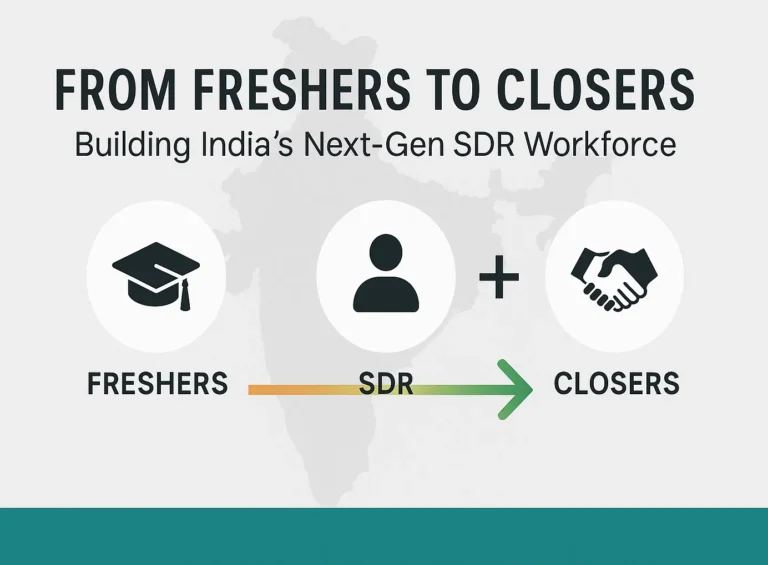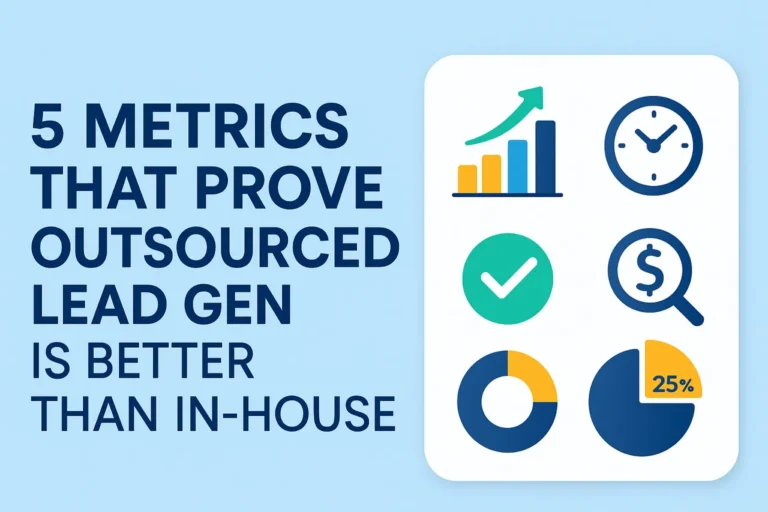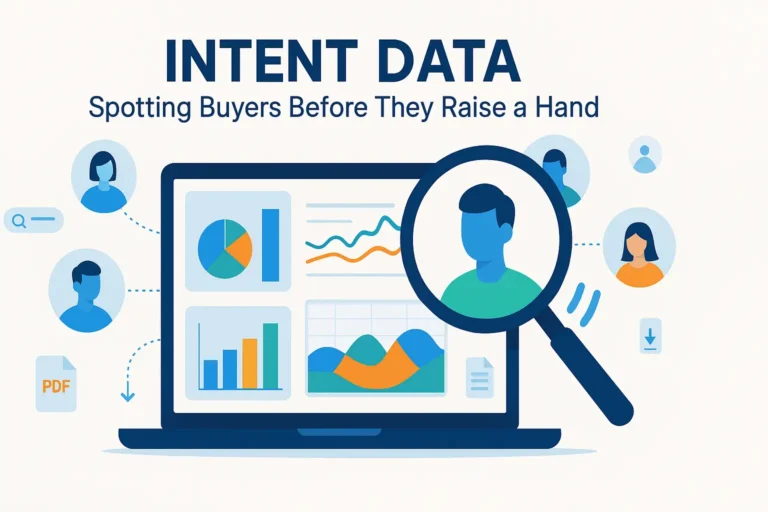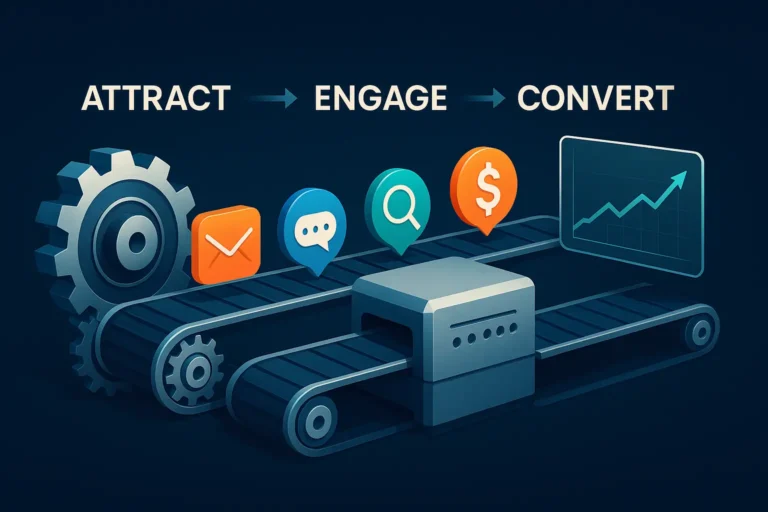Inside Sales vs Field Sales: What’s Best for Modern B2B?
Not long ago, B2B sales meant in-person meetings, handshakes, and long lunches to close a deal. That was the field sales model.
Then the internet changed everything.
Today, most B2B buying decisions start online. And as remote work, digital tools, and tighter budgets become the norm, more companies are asking:
Is inside sales better than field sales?
Let’s break down the difference—and help you decide what’s right for your business in 2025 and beyond.
What Is Inside Sales?
Inside sales refers to selling remotely. Reps use email, phone, video calls, and other online tools to connect with prospects—no travel, no office visits.
This model is built around:
- Speed
- Volume
- Tech tools (CRM, dialers, sales engagement platforms)
Inside sales teams are usually based in one central location—or working remotely from anywhere.
Their focus is on:
- Reaching more leads in less time
- Running multiple conversations in parallel
- Booking meetings, qualifying prospects, and closing small to mid-sized deals
In short: inside sales is digital-first, fast-moving, and cost-efficient.
What Is Field Sales?
Field sales (also called outside sales) is the traditional, face-to-face approach. Reps travel to meet prospects in person—at offices, conferences, trade shows, or even coffee shops.
Field sales works best when:
- You’re selling high-ticket products or services
- Deals require complex decision-making
- Relationships are a big part of the sale
It’s slower, more personalized, and often focused on a smaller number of high-value opportunities.
Side-by-Side Comparison
| Inside Sales | Field Sales | |
|---|---|---|
| Location | Remote or centralized office | On-site, face-to-face |
| Tools | Email, phone, video, CRM | In-person meetings, events |
| Deal Size | Small to mid-market | Mid to enterprise |
| Cycle Time | Shorter | Longer |
| Cost per Rep | Lower | Higher (travel, time, overhead) |
| Scalability | Easier to scale | Harder to scale quickly |
Why Inside Sales Is Taking Over in 2025
Over the past few years, a shift has happened—and it’s not going back.
Here’s why inside sales is becoming the go-to model for modern B2B companies:
1. B2B Buyers Prefer Remote Conversations
Your buyers are busy. They don’t want to book a lunch meeting if they can get answers on a quick call or email.
Today, most buyers:
- Research online before talking to sales
- Want fast, convenient communication
- Expect a simple, digital buying experience
Inside sales makes that possible.
2. Inside Sales Is More Cost-Effective
Let’s be real: field sales is expensive.
Travel, lodging, meals, time spent on the road—it all adds up. And when you’re trying to reach dozens (or hundreds) of accounts, that model just doesn’t scale.
Inside sales teams can:
- Handle more conversations per day
- Cover more territory
- Book meetings without ever leaving their desk
This makes it ideal for lean B2B teams that want to grow without burning budget.
3. Technology Has Leveled the Playing Field
You don’t need to meet face-to-face to build trust anymore.
Video calls, personalized emails, and well-researched outreach go a long way. With the right tools and training, inside sales reps can:
- Personalize every message
- Run product demos virtually
- Follow up with speed and precision
Field sales still has value—but inside sales can now do most of the same things, faster and more efficiently.
When Field Sales Still Makes Sense
That said, field sales isn’t dead. It’s just different now.
There are still situations where a face-to-face meeting can make all the difference:
- You’re closing a six-figure (or larger) deal
- The client’s buying process involves multiple stakeholders
- There are legal or logistical details that need to be worked out in person
- You’re in an industry where relationships are everything (think finance, manufacturing, enterprise IT)
In those cases, having a rep on-site builds trust in a way that video sometimes can’t match.
The Hybrid Sales Model
Many companies are now combining inside and field sales into a hybrid model.
Here’s how that works:
- Inside sales reps handle prospecting, qualification, and early conversations
- Field sales reps step in for final meetings, large accounts, or enterprise clients
This gives you the best of both worlds:
- Scale and speed from inside sales
- Personal touch and high-stakes closing from field sales
It also gives your sales team a clear structure and allows reps to specialize based on skill set and deal size.
What’s Best for You?
Here’s how to decide:
Choose inside sales if:
- You’re selling to SMBs or mid-market
- You want a fast, scalable model
- Your deals close with 1–2 decision-makers
- You’re growing in multiple regions or markets
Choose field sales if:
- Your deals are large, complex, or regulated
- You sell into legacy industries
- Trust-building is a core part of the sales process
- You already have reps in-market who know the territory
Or blend the two—start with inside sales, and add field sales support where needed.
Final Thoughts
The modern B2B sales landscape has changed. Your buyers don’t care how you sell—they care how fast you can help them solve a problem.
Inside sales offers speed, efficiency, and scale. Field sales offers depth, connection, and influence. The best choice depends on your product, your audience, and your goals.
For most companies, inside sales is no longer just an option—it’s the foundation. Build on it. Then add field sales when the deal demands it.
Either way, the future belongs to sales teams who can adapt quickly and meet buyers where they are.







